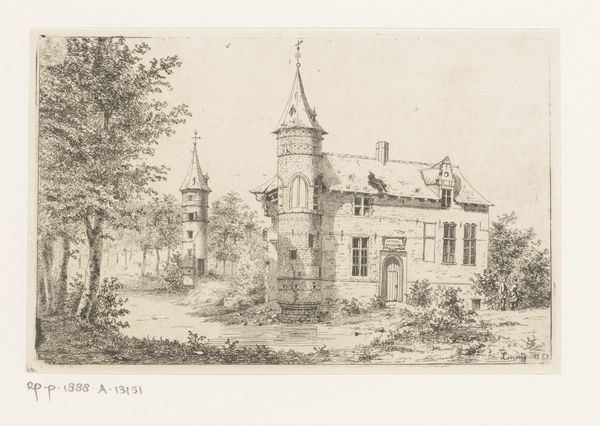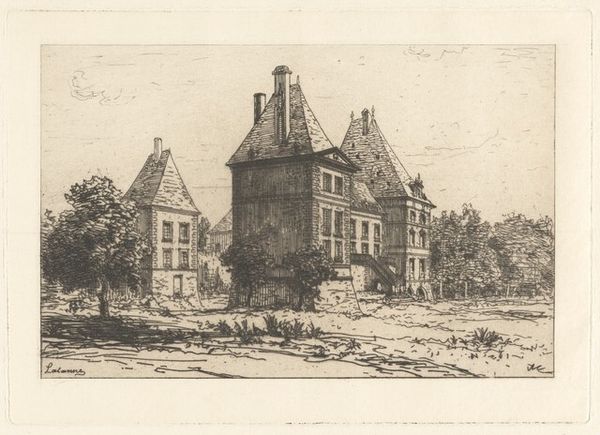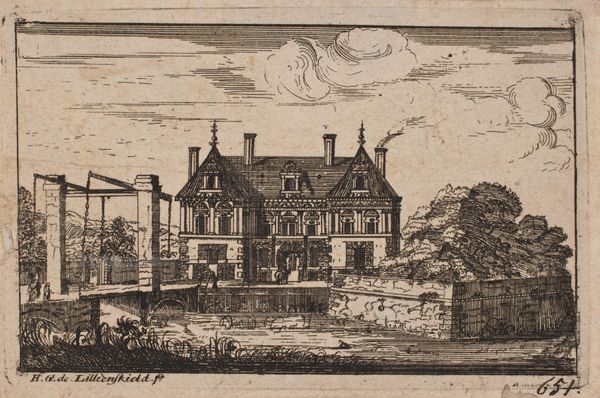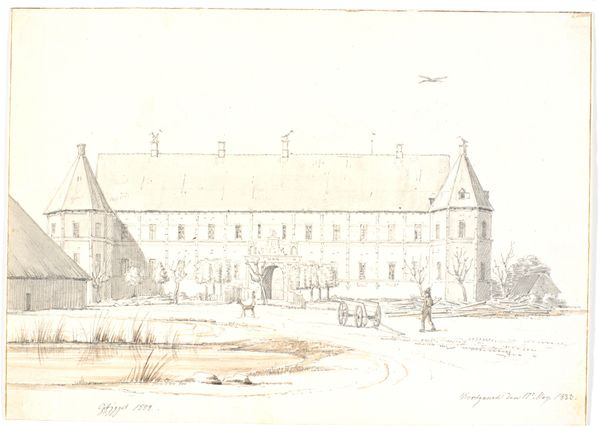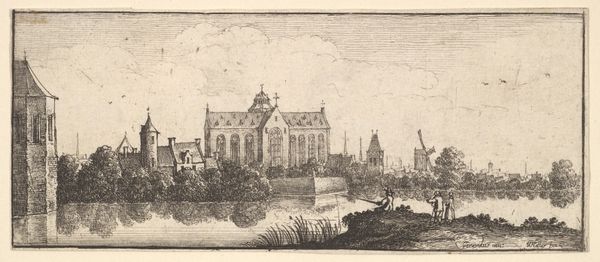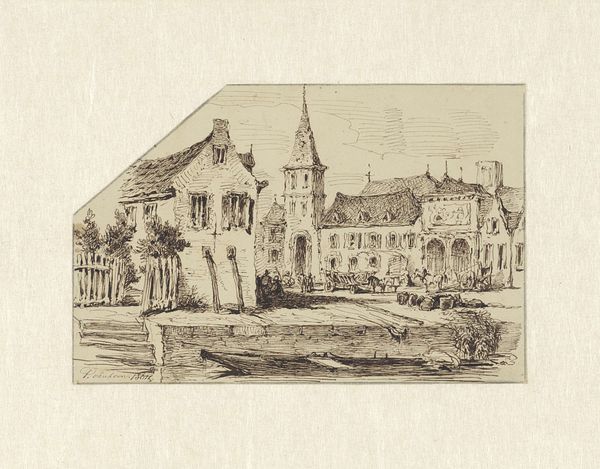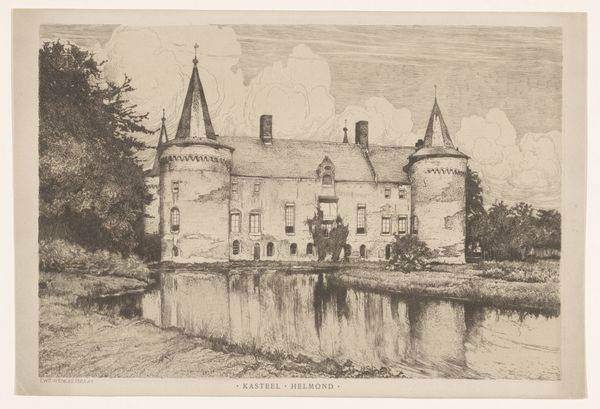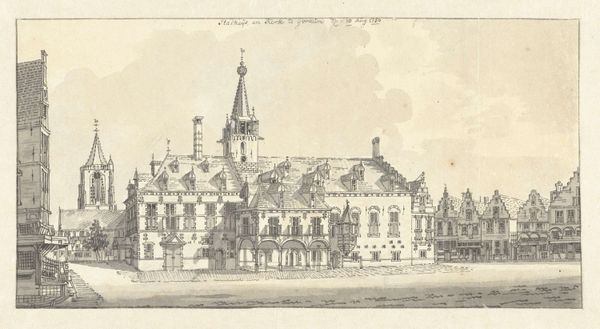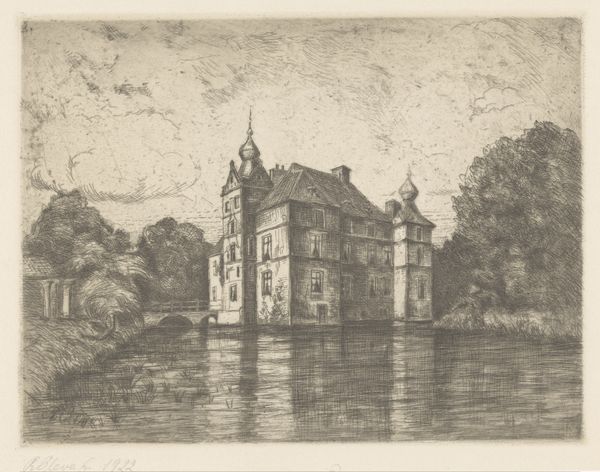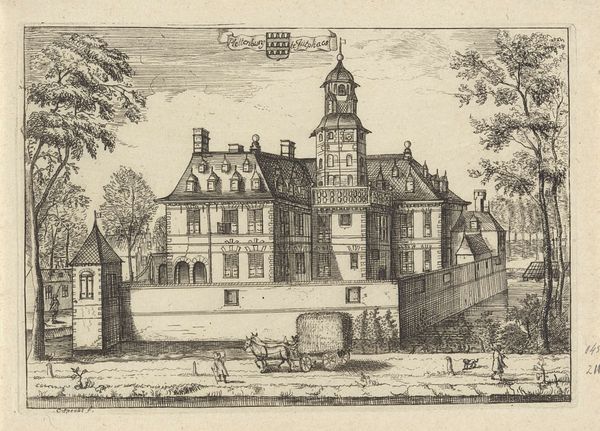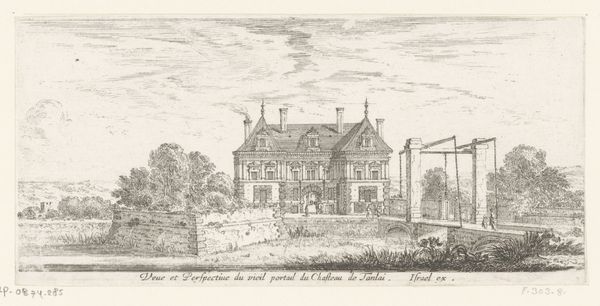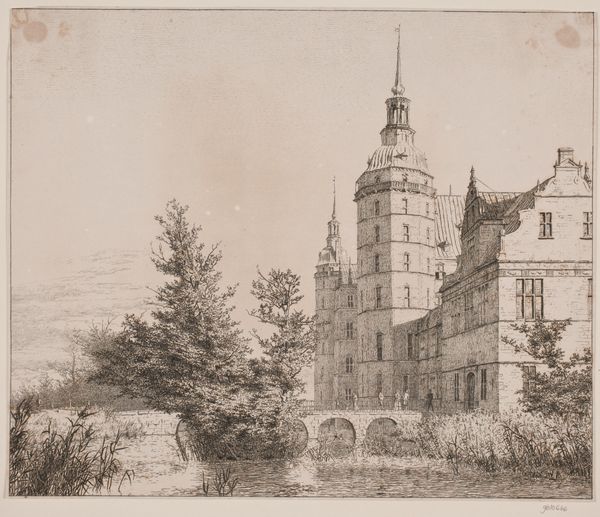
drawing, ink
#
drawing
#
landscape
#
ink
#
line
#
academic-art
#
realism
Dimensions: 119 mm (height) x 173 mm (width) (bladmaal)
Curator: Well, hello there! Today, we're looking at Louise Ravn-Hansen's "Jægerspris," an ink drawing from 1880, currently housed at the SMK. It depicts a building and grounds. My first impression is how orderly and perhaps even idyllic it appears. Editor: It has a very bourgeois feel, doesn’t it? But I find the linework a little bit hesitant. I’m wondering about the social context in which Ravn-Hansen, as a woman artist, would have been producing landscapes like this in late 19th century Denmark. The art world at the time must have presented real obstacles for female artists seeking recognition. Curator: Absolutely, the means of artistic production was decidedly male. We also have to remember, that the landscape tradition itself was built by men with money, time and supplies. Looking closely, it's amazing what details Ravn-Hansen captured just using ink: the texture of the roof tiles, the leaves on the trees. And look how it captures the effect of light, she employs cross hatching which build depth in her picture! It is all so methodically done! Editor: I'm wondering who might have occupied a place like Jægerspris in 1880 and what their relationship would have been to the land. We should think too about whose narratives get inscribed into landscape art. This carefully controlled garden space also reminds me of leisure activities that the working classes did not have. Curator: That makes sense. Thinking of the making, and the labor of maintaining that perfectly ordered landscape…someone had to trim the hedges, plant those flowers. And someone also was paying for the materials to make the piece! There are hidden class relations imbued in this apparently "natural" place. Editor: Definitely. We shouldn't take that ordered perfection as natural. There were a lot of social inequalities at the time this artwork was created, gender, class and location being the primary causes. To understand this piece fully we also need to ask who did not get invited to enjoy this estate and which people’s labor was deliberately concealed within Ravn-Hansen’s composed drawing. Curator: Yes, unseen laborers maintained this landscape and Ravn-Hansen translated that into labor again. So much history here! Editor: Exactly. Considering those questions enriches our understanding, especially within the broader discourse around women artists during that period. Curator: Precisely! A drawing like this seems simple at first, but opens up a whole world of issues. Editor: Well put, a great point on which to end!
Comments
No comments
Be the first to comment and join the conversation on the ultimate creative platform.
